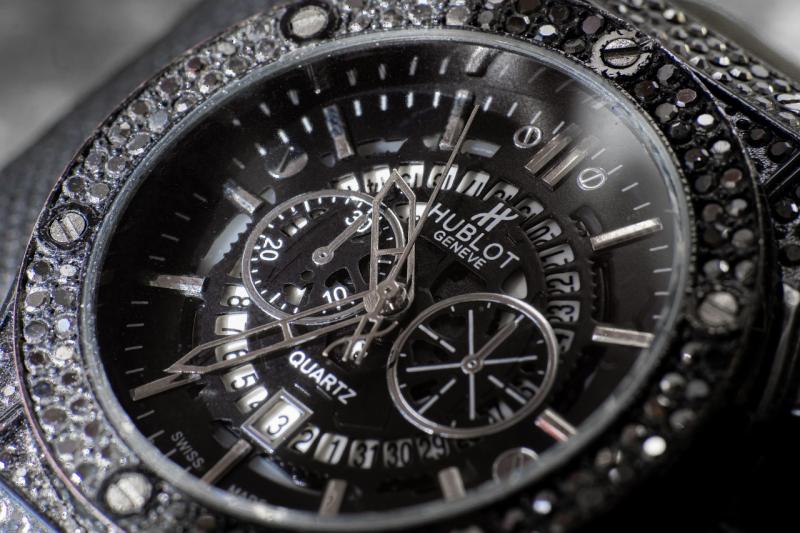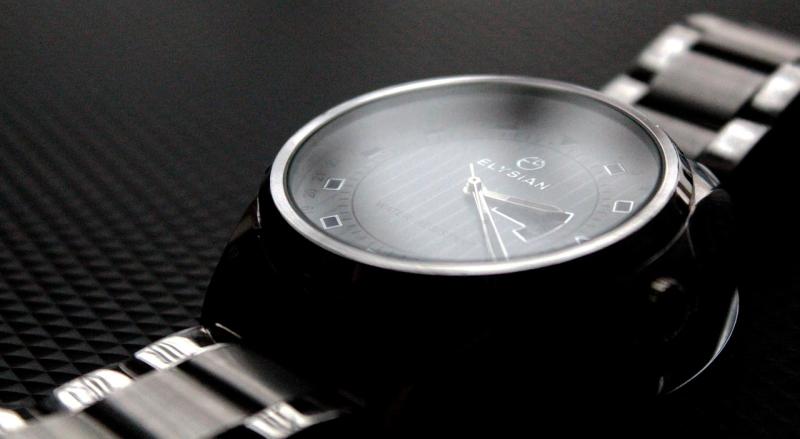Rolex is not just a luxury watch brand; it's a symbol of success, craftsmanship, and timeless elegance. Since its inception over a century ago, the Swiss brand has become synonymous with high-end watches that define not just the time, but the aspirations of those who wear them. But how did Rolex become the world-renowned name it is today? Let’s take a deep dive into the history, iconic models, and milestones of Rolex.
The Birth of Rolex: 1905 - 1920
Rolex’s story began in 1905, when Hans Wilsdorf, a German-born watchmaker, founded the company in London under the name Wilsdorf & Davis, alongside his brother-in-law, Alfred Davis. The company initially imported Swiss movements and placed them in high-quality cases. At the time, pocket watches were the norm, and wristwatches were seen as less accurate and more of a women’s accessory. Wilsdorf, however, saw the potential in wristwatches and was determined to change this perception.
In 1908, Wilsdorf registered the trademark Rolex, a name that was both short and easy to pronounce in multiple languages. The exact origin of the name is still a bit of a mystery, but Wilsdorf himself stated that he wanted something that sounded like a "watch winding up", and "Rolex" fit that vision perfectly.
The First Milestones: 1920s - 1940s
Rolex’s reputation began to grow as it made several innovations in watchmaking, marking the 1920s as a pivotal decade for the brand.
1926 – The First Waterproof Watch: The Oyster
In 1926, Rolex achieved a major milestone with the launch of the Rolex Oyster, the world’s first waterproof wristwatch. The innovation was revolutionary: the watch featured a hermetically sealed case that protected the movement from dust, water, and moisture. The watch was an immediate success, and it gained further notoriety when Mercedes Gleitze, a British swimmer, wore an Oyster during her swim across the English Channel in 1927. The watch survived the swim without issue, cementing its reputation for durability.
1931 – The First Self-Winding Mechanism: The Perpetual Movement
In 1931, Rolex introduced the Perpetual movement, a self-winding mechanism that was powered by the natural motion of the wearer's arm. This was a significant innovation in horology, as it eliminated the need for manual winding. The Perpetual movement would go on to become a hallmark of Rolex watches, powering many of the brand's models to this day.
Post-War Growth: 1950s - 1960s
Following World War II, Rolex expanded its reach and its catalog of models, introducing some of its most iconic timepieces. During the 1950s and 1960s, the brand became the choice of adventurers, professionals, and people who sought both style and performance.
1953 – The Rolex Submariner
One of Rolex’s most iconic models, the Submariner, was introduced in 1953. Designed specifically for divers, it was the first watch to be water-resistant to 100 meters (330 feet), a remarkable feat at the time. The Submariner’s rotating bezel, which allowed divers to track elapsed time underwater, became a key feature that set it apart from other watches. Its rugged design and functionality made it a favorite among professionals, and today, it’s one of Rolex’s most coveted models.
1954 – The Rolex GMT-Master
In 1954, Rolex partnered with Pan American Airways to create the GMT-Master. This watch was designed for pilots and travelers who needed to track multiple time zones simultaneously. The GMT-Master featured a 24-hour hand and a rotating bezel, allowing wearers to monitor two time zones at once. The model's iconic red-and-blue bezel, known as the "Pepsi bezel," became an instant classic.
The Luxury Watchmaker's Evolution: 1970s - 1990s
By the 1970s, Rolex had firmly established itself as the leader in luxury watches, but it wasn't without challenges. The Swiss watch industry faced intense competition from affordable, reliable quartz watches. However, Rolex's commitment to precision and craftsmanship kept it at the forefront.
1971 – The Rolex Day-Date
Introduced in 1971, the Day-Date became known as the "President" watch, largely due to its association with influential figures such as U.S. President Dwight D. Eisenhower. The Day-Date was the first wristwatch to display both the day of the week and the date, and it became synonymous with success and power. Often crafted in gold or platinum, this model was a statement of luxury and distinction.
1985 – The First 904L Stainless Steel
Rolex made another leap in watchmaking innovation in 1985, when it began using 904L stainless steel for its cases and bracelets. This type of steel is highly resistant to corrosion and is often used in the aerospace and chemical industries. Rolex's decision to use this material ensured that its watches would maintain their lustrous appearance even after years of exposure to the elements.
Modern-Day Rolex: 2000s - Present
Today, Rolex is one of the most recognized and respected luxury brands in the world. The company's commitment to innovation, precision, and luxury continues to define its status in the watch industry.
2005 – The Rolex Sea-Dweller 4000
Rolex introduced the Sea-Dweller 4000 in 2005, a diver’s watch designed to withstand extreme depths. This model features a depth rating of 4000 feet, along with the Helium Escape Valve, which allows gas to escape when diving at great depths. It’s a true marvel of engineering.
2012 – The Rolex Sky-Dweller
The Sky-Dweller was introduced in 2012 and became one of Rolex's most complicated models. Featuring an annual calendar and dual time zone, the Sky-Dweller is aimed at frequent travellers and those who need a highly functional yet elegant watch. Its unique dial design and rotating bezel made it an instant hit among collectors.
Rolex’s Iconic Models: A Few Notable Mentions
Throughout its history, Rolex has produced a range of iconic models that have become the gold standard in luxury watches. Here are a few that stand out:
-
Rolex Submariner – The ultimate diver's watch, famous for its rugged design, rotating bezel, and water resistance.
-
Rolex Daytona – A chronograph originally designed for motor racing enthusiasts. It became iconic thanks to its association with actor Paul Newman and its association with speed and precision.
-
Rolex Datejust – Known for its elegant design and versatile functionality, the Datejust has been a classic since its introduction in 1945.
-
Rolex Day-Date – Often called the "President's Watch," it is one of the most prestigious timepieces Rolex has ever created, combining day and date functions with exceptional craftsmanship.
A Timeline of Rolex's Milestones
| Year | Milestone |
|---|---|
| 1905 | Hans Wilsdorf founded Wilsdorf & Davis in London. |
| 1908 | The brand name “Rolex” is registered. |
| 1926 | Introduction of the first waterproof watch: The Rolex Oyster. |
| 1931 | Introduction of the Perpetual self-winding movement. |
| 1953 | The Rolex Submariner is introduced. |
| 1954 | The Rolex GMT-Master is introduced. |
| 1971 | The Rolex Day-Date, also known as the "President," is launched. |
| 1985 | Rolex begins using 904L stainless steel. |
| 2005 | Introduction of the Rolex Sea-Dweller 4000. |
| 2012 | The Rolex Sky-Dweller is introduced. |
Conclusion: Rolex – A Legacy of Excellence
From its humble beginnings in London to becoming a symbol of luxury and success, Rolex’s story is one of innovation, precision, and dedication to excellence. Over the decades, the brand has continuously pushed the boundaries of watchmaking, setting new standards in design, functionality, and durability. Today, a Rolex is not just a watch—it’s a statement, a piece of history, and a legacy of unrivalled craftsmanship.
With its timeless models and commitment to quality, Rolex remains the epitome of luxury, an enduring symbol that will continue to stand the test of time for generations to come.
Rolex Cosmograph Daytona White Dial Stainless Steel Oyster Men's Watch 116500
Product information
$36,850.00
Product Review Score
4.45 out of 5 stars
227 reviews



